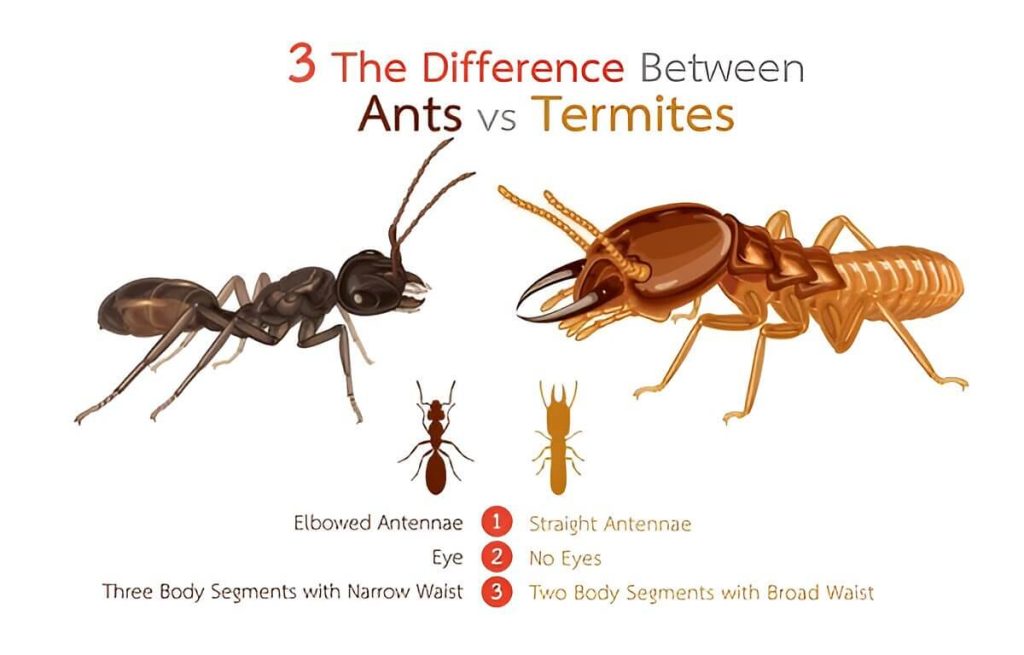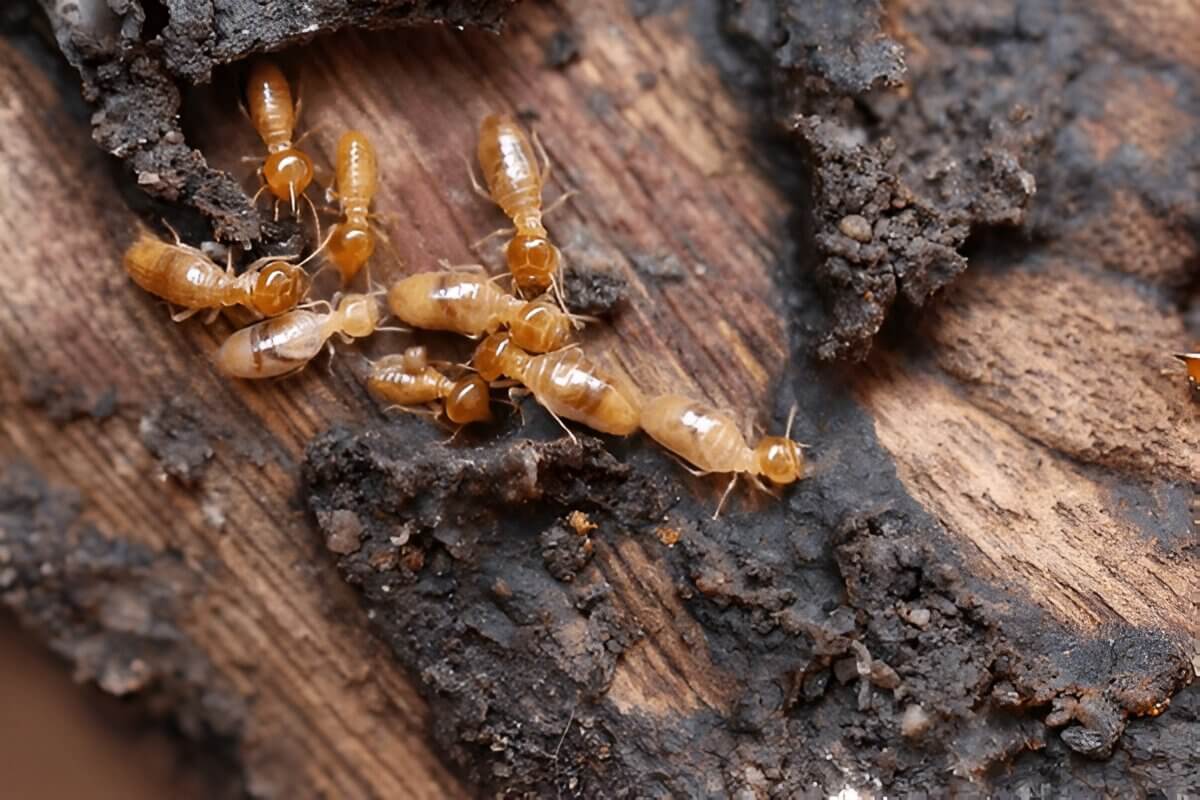Termites may be small, but their impact can be significant, making termite identification a crucial aspect of effective pest control. Understanding termite appearance is the first step in protecting your home and property from these destructive pests. Termites often go unnoticed until substantial damage has occurred, which is why identifying them early is essential.
Termite identification involves recognizing the distinct features of these insects, such as their straight antennae and uniform waist, distinguishing them from ants. By familiarizing yourself with their appearance, you can spot an infestation before it escalates.
Knowing why to identify termites goes beyond just preventing damage; it’s about maintaining the structural integrity of your home and avoiding costly repairs. Early detection through proper identification allows for timely intervention by pest control professionals, ensuring that any infestation is managed efficiently and effectively. In essence, understanding how to identify termites not only safeguards your property but also provides peace of mind in preserving its value for years to come.
The General Appearance of Termites
Understanding the general appearance of termites is crucial for effective insect identification, especially when trying to prevent or address infestations. So, what do termites look like? These small insects are often mistaken for ants due to their similar size and shape, but they possess distinct characteristics that set them apart.
Termite anatomy includes a soft body that is usually pale in color, ranging from white to light brown. Unlike ants, termites have straight antennae and a broad waist, giving them a more uniform appearance. Their wings are another identifying feature; reproductive termites have two pairs of wings that are equal in size and extend beyond their body length. These wings are often shed after swarming events.
In terms of identifying features of termites, it’s important to note the differences between the various castes within a colony. Worker termites are typically lighter and smaller than soldiers or reproductives. Soldiers can be identified by their larger heads and powerful mandibles used for defense.
By familiarizing yourself with these key features of termite anatomy, you can more effectively identify these pests and take appropriate action to protect your home or property from potential damage.
Differences Between Termite Species (Subterranean vs Drywood vs Dampwood)
Understanding the differences between termite species is crucial for effective pest management. The three primary types of termites (subterranean, drywood, and dampwood) each have distinct characteristics that influence their behavior and the methods used to control them.
Subterranean termites are perhaps the most common and destructive type. They typically live underground or in moist, secluded areas above ground, building extensive networks of tunnels to reach food sources. Subterranean termite appearance is characterized by their creamy-white to dark brown bodies and small size. These termites require contact with soil to survive and often build mud tubes as protective pathways between their nest and food sources.
In contrast, drywood termites do not need contact with soil. They infest dry wood structures such as furniture or framing within homes. Drywood termite characteristics include a larger size compared to subterranean termites and a lighter color ranging from light brown to cream. Unlike their subterranean counterparts, drywood termites create colonies directly within the wood they consume, making them harder to detect until significant damage has occurred.
Dampwood termites are typically found in areas with high moisture levels since they prefer decaying wood that is naturally damp. Dampwood termite features include a much larger size than both subterranean and drywood species, with a darker brown coloration. These termites are less likely to infest homes because they require very moist environments that are usually not present in well-maintained structures.
By identifying these key differences among termite species (subterranean’s need for soil contact, drywood’s independence from moisture-rich environments, and dampwood’s preference for wet conditions) homeowners can better understand how each type might affect their property and take appropriate preventative measures or seek targeted treatment options when dealing with infestations.
Termites vs Ants (How to Spot the Differences)

When it comes to distinguishing between termites and ants, understanding their physical differences is key. Both insects can cause concern when found in or around your home, but identifying which pest you’re dealing with is crucial for effective management.
One of the primary differences between ants and termites lies in their appearance. Termites generally have straight, beaded antennae, whereas ants have elbowed antennae. Additionally, if you look closely at their bodies, you’ll notice that termites have a broad waist with little distinction between the thorax and abdomen. In contrast, ants possess a narrow waist that distinctly separates these body segments.
Another point of comparison involves their wings. During certain life stages or swarming periods, both insects can be winged. However, termite wings are uniform in size and shape and tend to be longer than their bodies. Ants, on the other hand, feature two pairs of wings: a larger front pair and a smaller back pair.
Recognizing these differences between ants and termites can help homeowners make informed decisions about pest control measures. Whether you’re dealing with an ant infestation or suspect termite activity near your property, knowing how to tell if it’s a termite or an ant ensures you take the right steps toward protecting your home from damage.
The Lifecycle of a Termite
The lifecycle of a termite is a fascinating journey that begins with the egg and culminates in the development of complex social insects capable of building intricate colonies. Understanding the termite lifecycle stages is crucial for both pest control professionals and curious minds alike.
The journey starts when a queen termite lays eggs, which are tiny and translucent. These eggs hatch into larvae, which will eventually develop into different forms within the colony. Interestingly, baby termites, also known as nymphs, bear a striking resemblance to adult termites but are smaller in size and lack fully developed features.
As nymphs grow, they undergo several molts processes where they shed their exoskeleton to accommodate growth before differentiating into various roles within the colony. The primary roles include workers, soldiers, and reproductive termites. Workers maintain the nest and forage for food; soldiers protect the colony with their strong mandibles; while reproductive forms of termites are responsible for expanding the colony through mating.
Reproductive termites eventually develop wings and leave their original nest to establish new colonies, a phase known as swarming. This ensures genetic diversity and population spread across suitable environments.
Each stage of this lifecycle plays an essential role in maintaining the balance within their ecosystem or causing structural damage when they encounter human habitats. By understanding these stages, we gain insights into effective management strategies against these industrious insects.
The Role Specific Castes Play in the Colony and Their Distinct Appearances
In the intricate world of termite colonies, each caste plays a vital role in ensuring the survival and efficiency of the community. Understanding these roles and their distinct appearances helps in identifying and managing termite infestations effectively.
Swarmer termites, also known as alates, are reproductive members tasked with establishing new colonies. They possess wings that are typically equal in size, which they shed after mating. Their bodies are darker compared to other castes, often brown or black, allowing them to withstand brief exposure to sunlight during their nuptial flights.
Soldier termites have a unique appearance characterized by large mandibles or jaws used for defense against predators like ants. Their heads are noticeably larger than those of other castes and can range from light to dark brown depending on the species. The soldier’s primary function is protection, making them crucial for colony security.
Worker termites form the backbone of the colony with their sheer numbers and tireless work ethic. They are responsible for building tunnels, caring for eggs and larvae, and feeding other members through regurgitation. Workers lack wings and have soft bodies that are usually white or translucent in color.
The queen termite is perhaps the most fascinating member due to her size and pivotal role within the colony. She can grow significantly larger than her counterparts as her abdomen swells with eggs, sometimes reaching several inches in length. The queen’s primary responsibility is reproduction; she can lay thousands of eggs each day over many years, ensuring the colony’s growth and sustainability.
Each caste within a termite colony has adapted distinct physical characteristics suited to their specific functions, illustrating nature’s remarkable ability to optimize roles within an ecosystem. Understanding these differences not only aids in identification but also provides insight into how these complex societies thrive underground.
Why Proper Identification Matters for Effective Pest Control Solutions
In conclusion, understanding what termites look like is crucial for implementing effective pest control solutions. Termites are often mistaken for ants due to their similar size and shape, but there are distinct differences that can aid in proper identification. Termites typically have straight antennae, a uniform waist, and wings of equal length, whereas ants have bent antennae, a pinched waist, and wings of differing lengths.
Properly identifying termites ensures that the right treatment methods are employed to eliminate these pests effectively. Early detection and accurate identification can prevent significant structural damage to homes and buildings by allowing pest control professionals to tailor their strategies specifically to the type of termite infestation present. This targeted approach not only saves time and resources but also provides peace of mind knowing that the problem is being addressed efficiently.
By recognizing the physical characteristics of termites and understanding their behavior patterns, homeowners can take proactive steps in protecting their properties from potential infestations. Regular inspections by trained professionals further enhance this protective measure, ensuring that any signs of termite activity are promptly addressed with appropriate pest control solutions.
